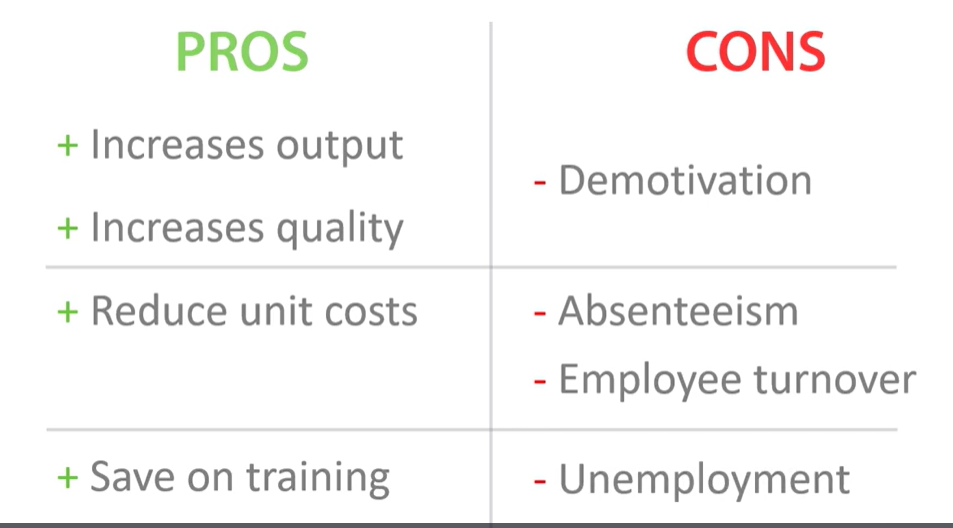1.1 nature of economics new
1/16
There's no tags or description
Looks like no tags are added yet.
Name | Mastery | Learn | Test | Matching | Spaced |
|---|
No study sessions yet.
17 Terms
ceteris paribus
all other things remaining equal.
positive and normative statements
positive statement- tested using evidence, objective, face based statements
e.g. raise in taxes will lead to an increase in tax revenue.
normative statements- is subjective and cannot be tested.
e.g. the government should increase taxes.
Economists tend to use positive statements to back up normative statements.
e.g. ‘The government should increase the interest rate’, is a normative statement which can be backed up with ‘the rate of inflation is at 5%’
The economic problem.
The problem of scarcity.
Renewable and non-renewable resources
Opportunity costs.
Economic problem = problem of scarcity.
The economic problem is that we have infinite wants but scarce resources.
Opportunity cost = the benefit given up of the next best alternative.
renewable resource- can be replaced on a level equal to consumption. e.g. oxygen, solar power and fish are renewable.
non-renewable resource- cannot be replaced on a level equal to consumption. e.g. fossil fuels, coal, oil and gas,
What is a PPF?
A PPF shows us all the possible combinations of two goods we can produce using all our resources efficiently.
need to learn how to calculate opportunity cost in PPF.
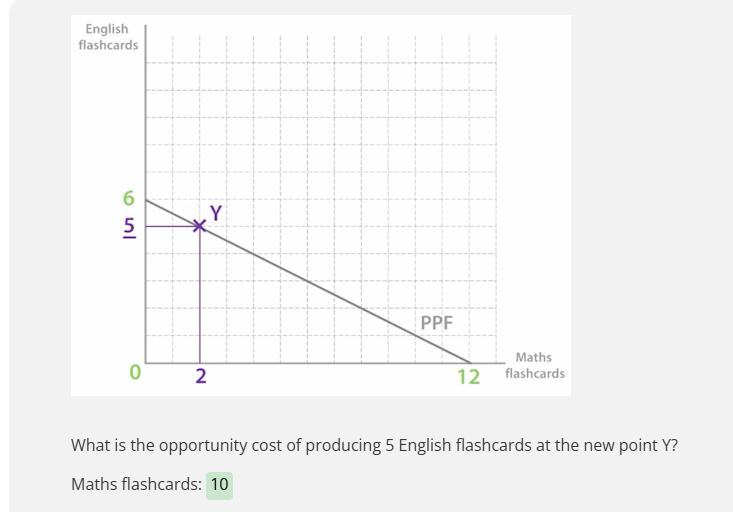
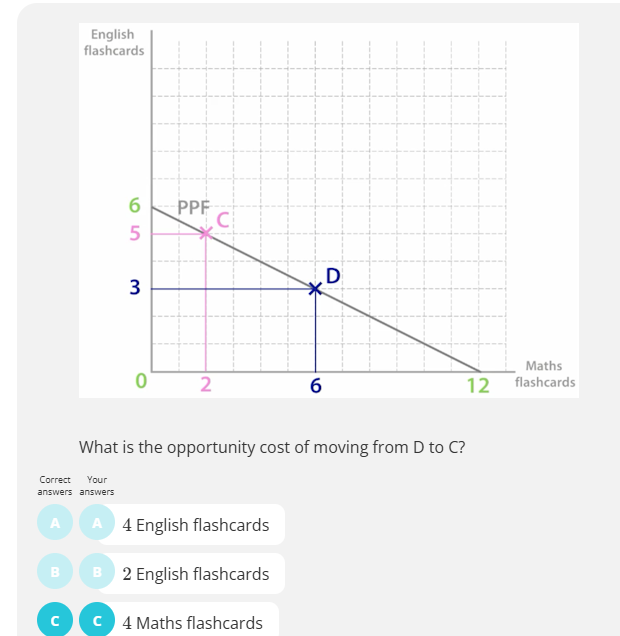
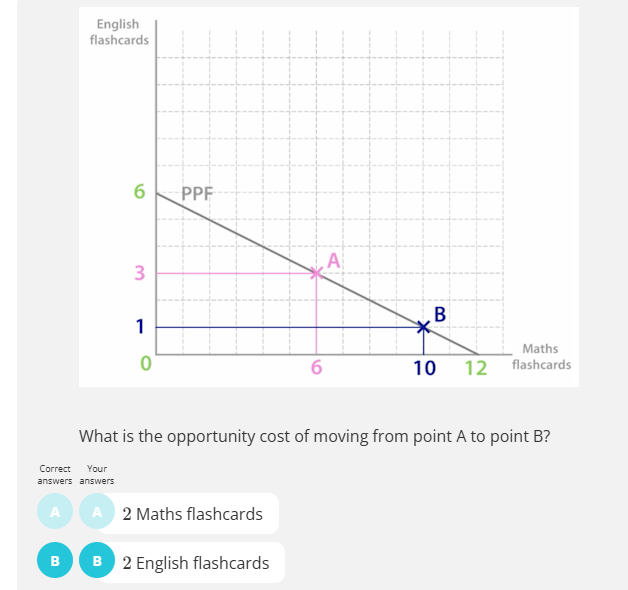
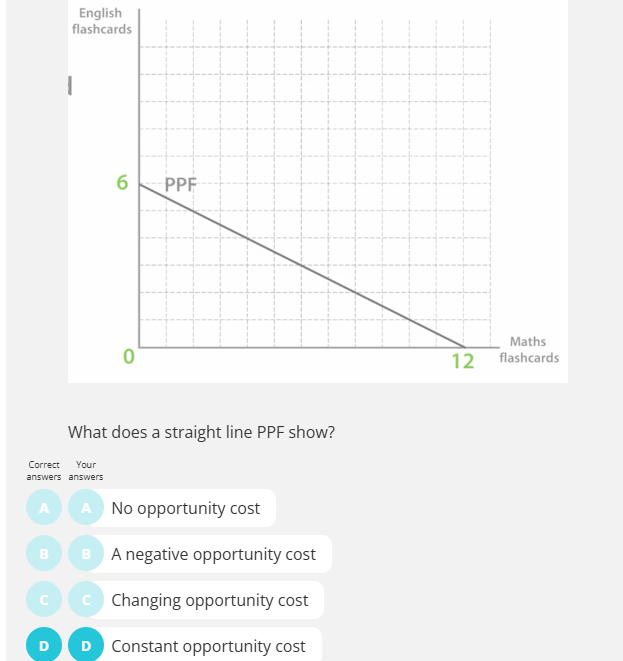
Constant opportunity cost PPF
All straight line PPF has constant opportunity cost.
Increasing opportunity cost.
Opportunity cost increased as produced more mangos.
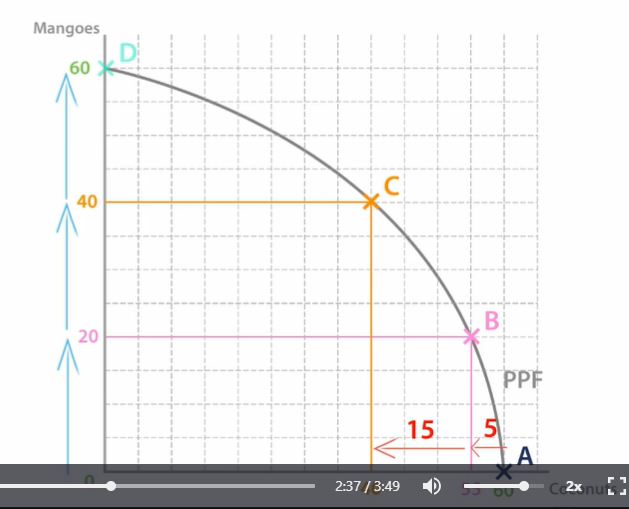
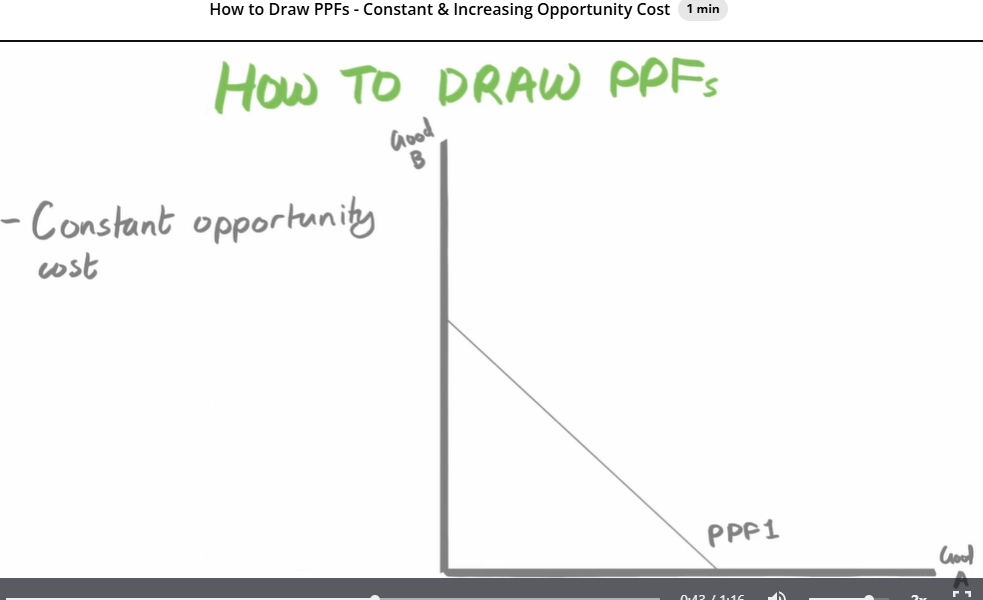
constant opportunity cost PPF
Increasing opportunity cost
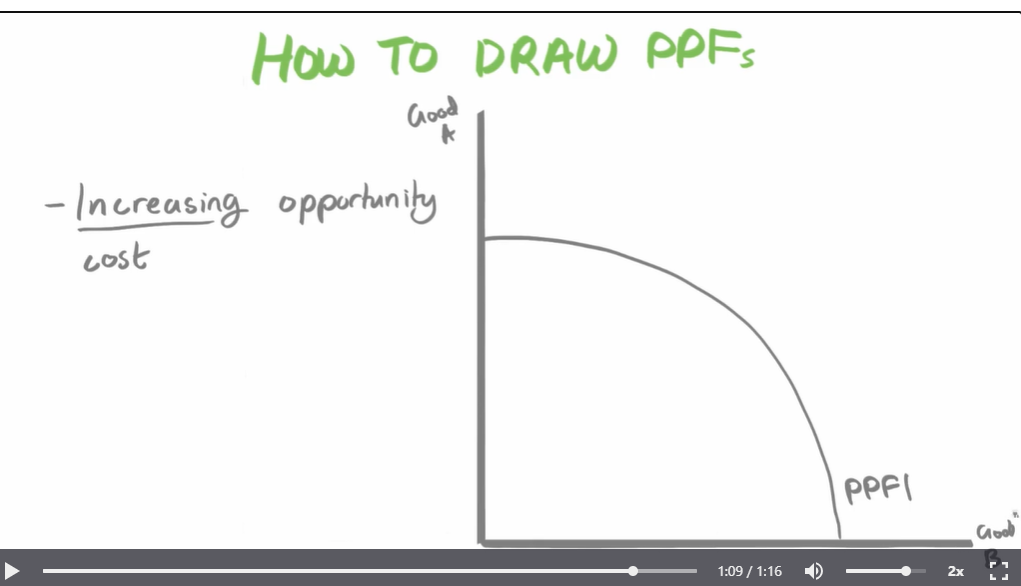
Diagram to show the opportunity cost of increasing the production of schools on a PPF.
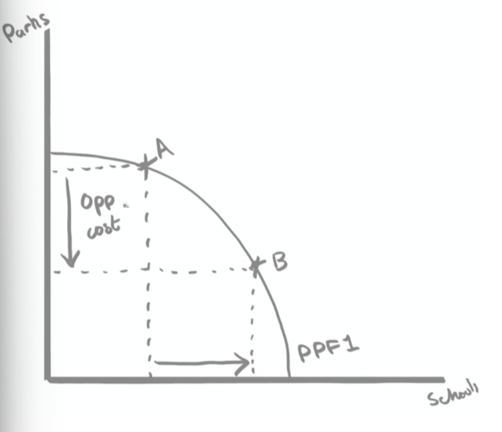
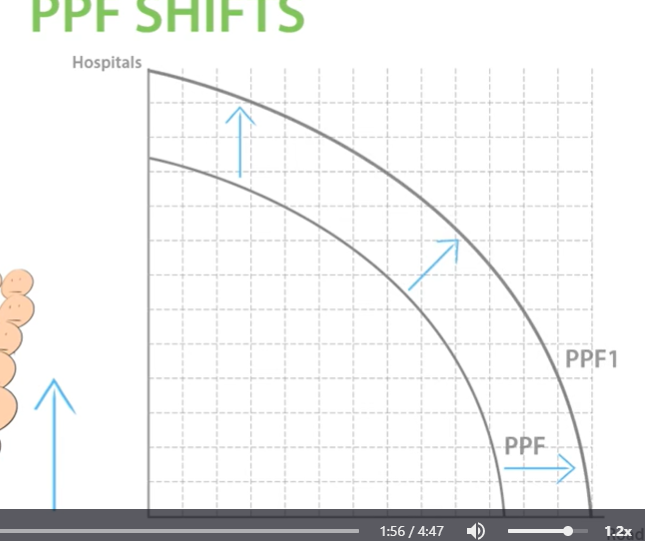
PPF shift outwards.
Population grew, increasing the amount of labour available. With more labour we can produce more roads and hospitals. Growth can be achieved by increasing the quantity/quality of resources.
PPF can shift inwards as if can produce less goods than previously. Can be due to natural disasters, number of resources running out, decrease in quantity/quality of labour.
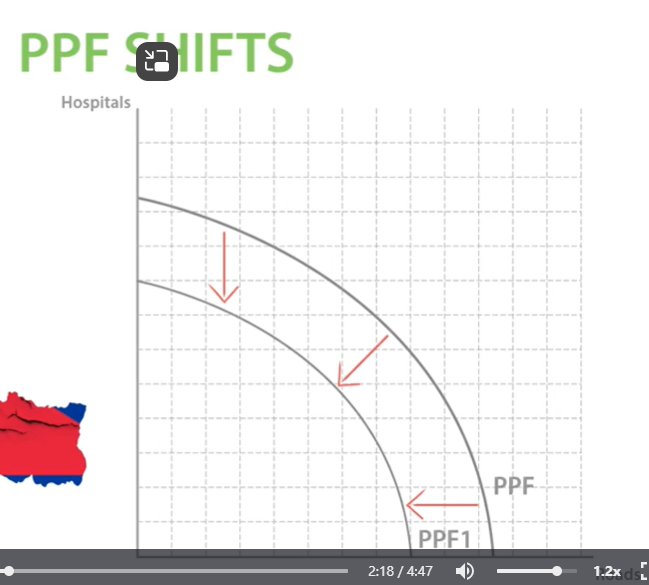
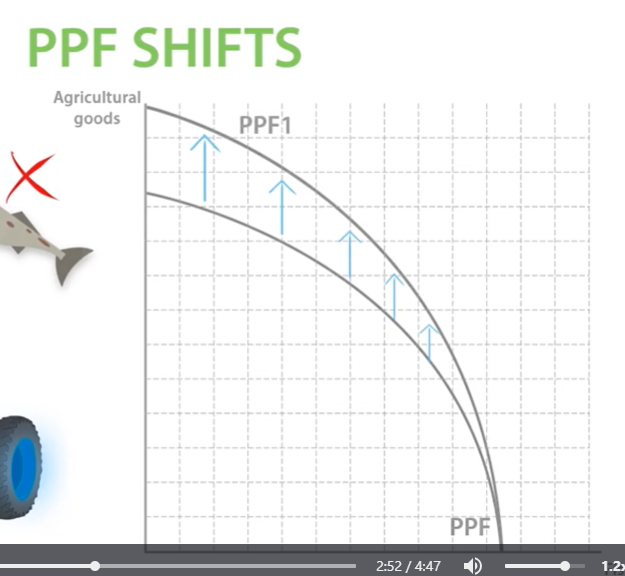
If nepal opened a super tractor, we can produce more agricultural goods, but wont help us catch fish.
What would happen if some of our workers became unemployed?
If workers unemployed, we are at a point inside our PPF, not using all our PPF, some of our labour is not being used.
Inefficient if inside the PPF, not employing all our labour.
If workers stay unemployed for long time, they will loose skills and be less efficient, therefore unemployment could cause PPF to shift inwards, if it causes a reduction in productive potential in the economy.
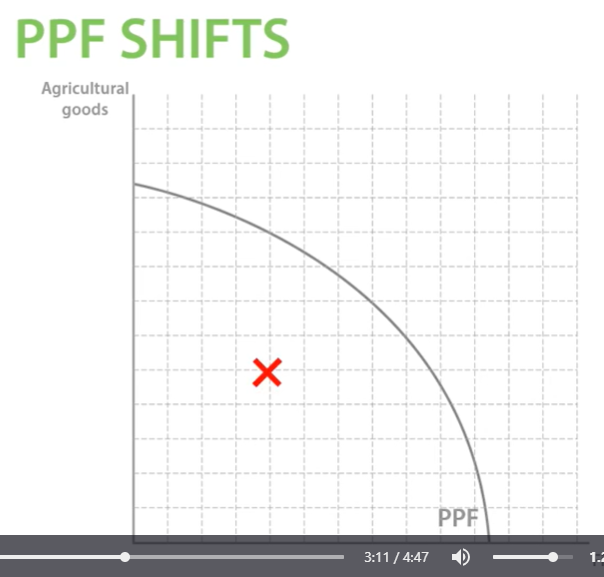
PPFs Capital and Consumer goods.
Consumer goods are goods that are demanded and brought by households and individuals.
Capital goods are goods that are used to produce consumer goods e.g. machinery in a factory or a oven to consume pizza.
If Russia produces more capital goods now, in the future Russia’s PPF will shift outwards.
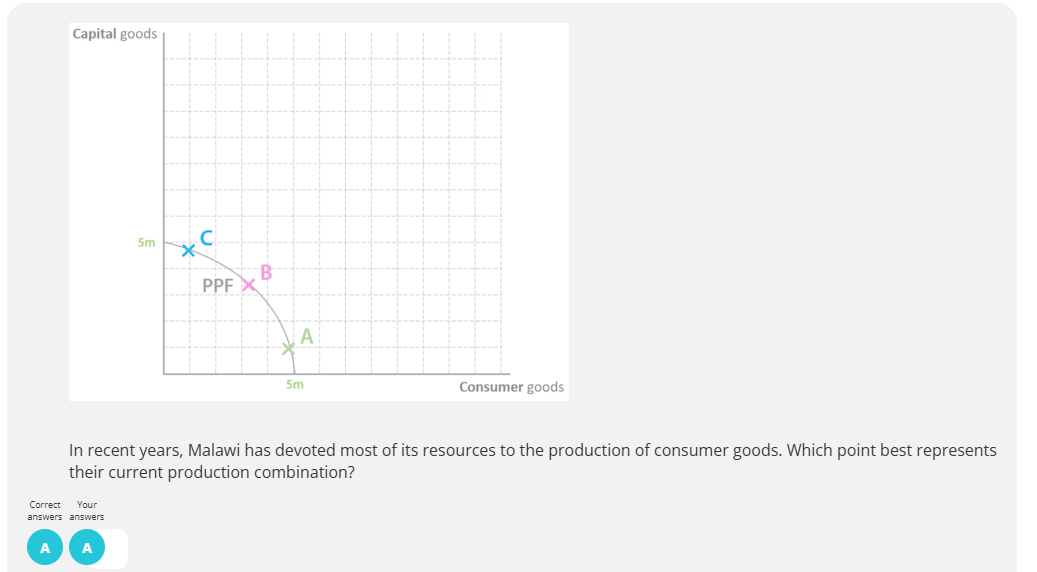
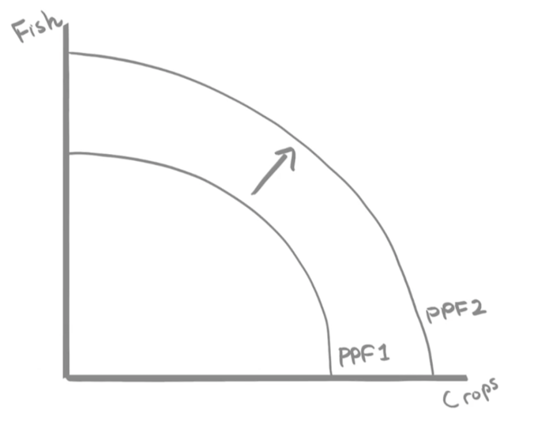
diagram to show increased inward migration on a PPF for crops and fish.
Increased outward migration on PPF for crops and fish,
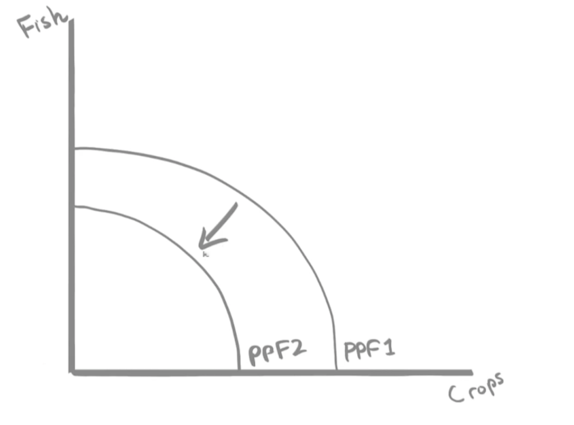
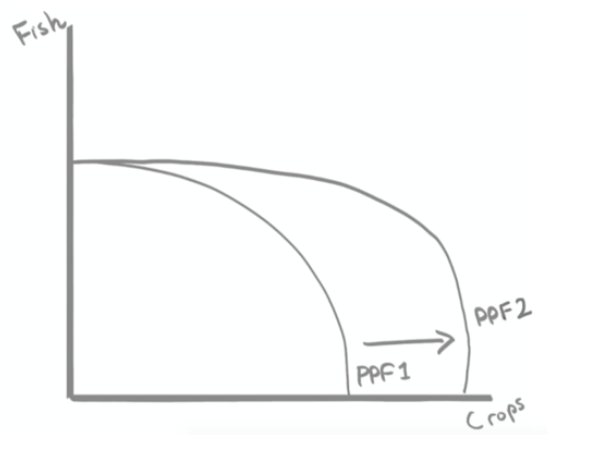
Diagram to show the effects of improvements in fertiliser on a PPF for crops and fish.
Diagram to show improvements in fishing net technology on a PPF for fish and crops.
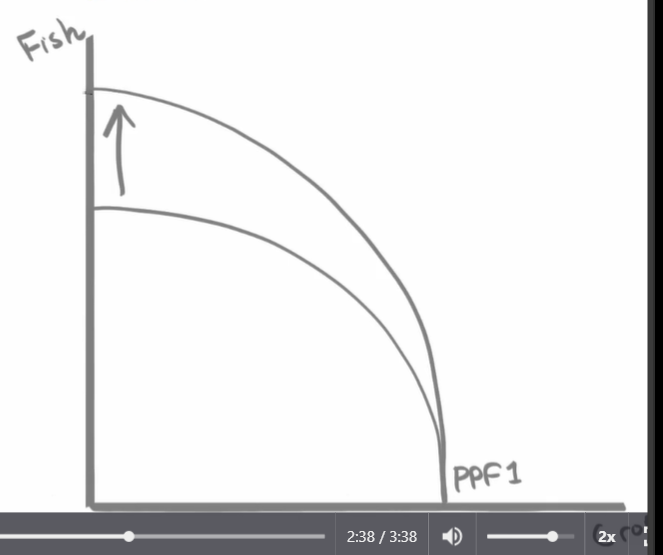
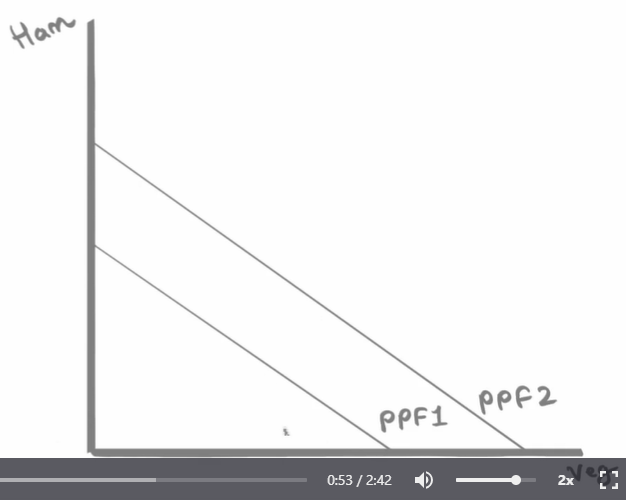
Constant opportunity cost: better trained chefs,
constant opportunity cost: killing of swine flu for pigs.
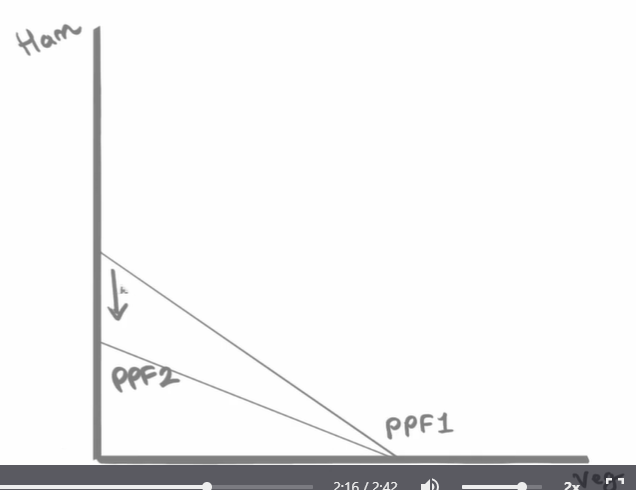
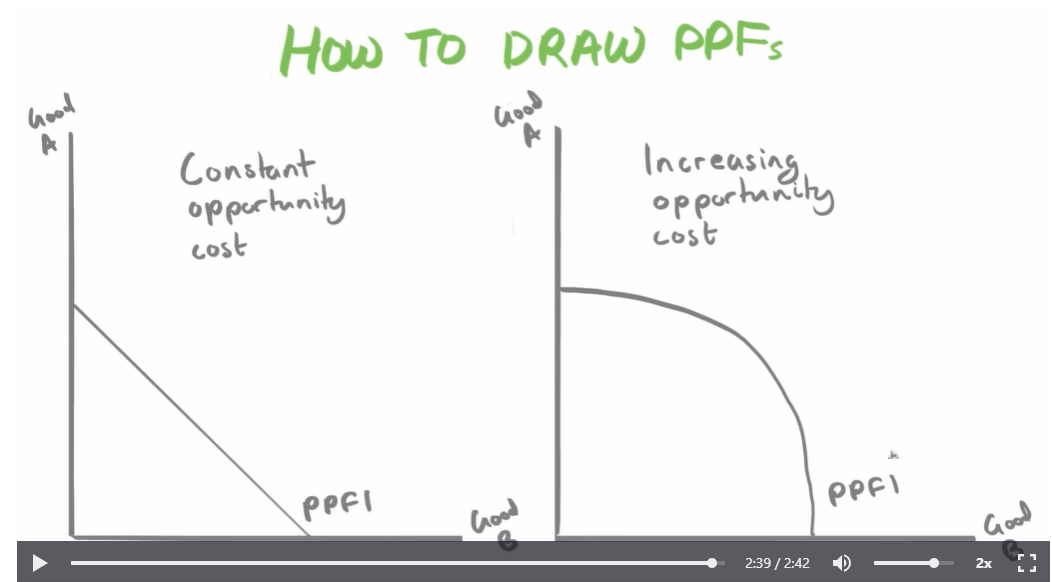
Specialisation and the division of labour
Specialisation of labour is when labour becomes specialised in a particular part of the production process.
pros:
increase output, increase quality.
labour productivity increased, higher quality of goods and services.
time is not wasted
workers are trained to do one specific task which will decrease unit costs.
save on training costs.
cons:
demotivation would reduce productivity and reduce quality.
workers might quit, which increases employee turnover, production process breaks down. extra recruitment and retraining, increase costs.
one specialised skill will lead to structural unemployment.
